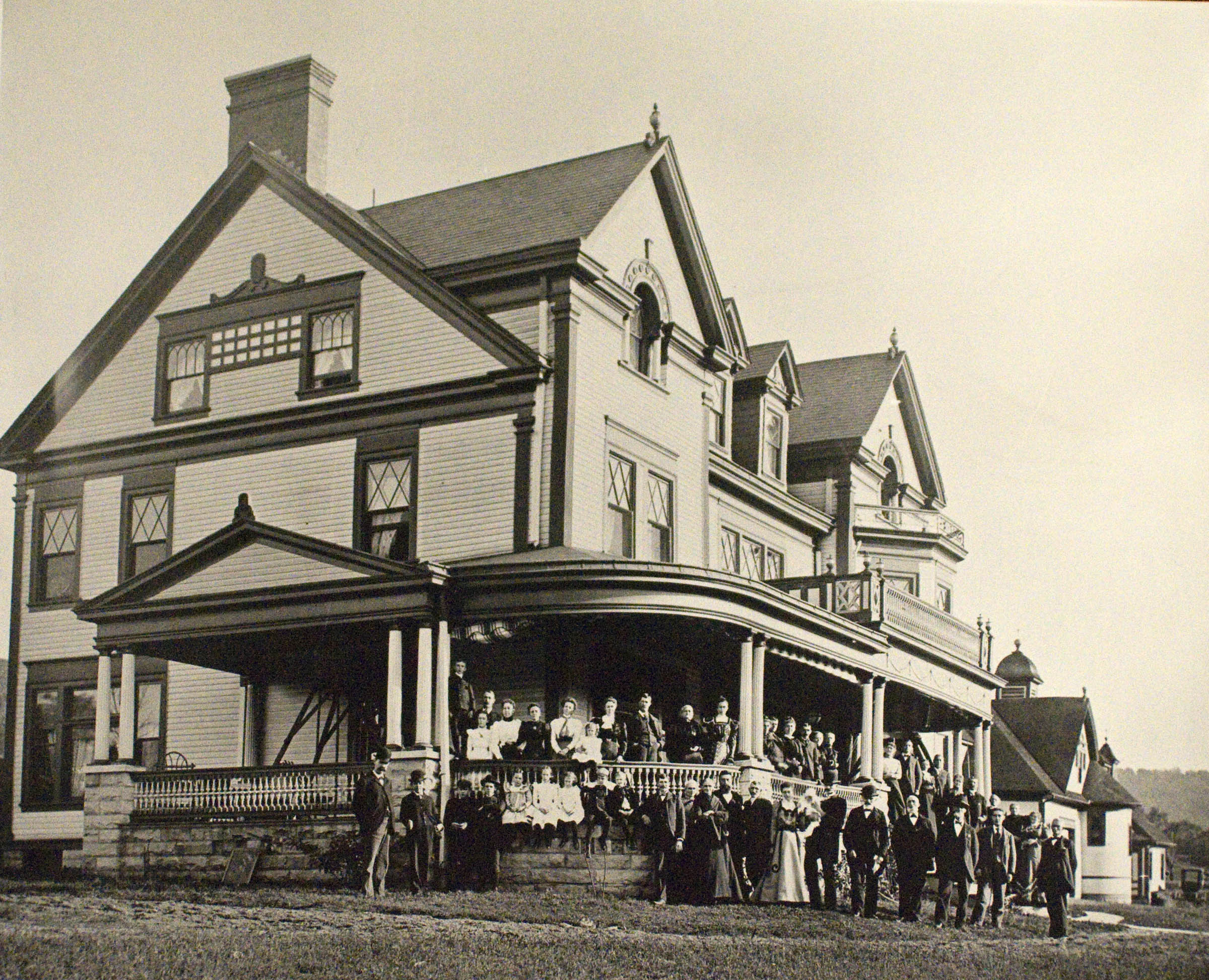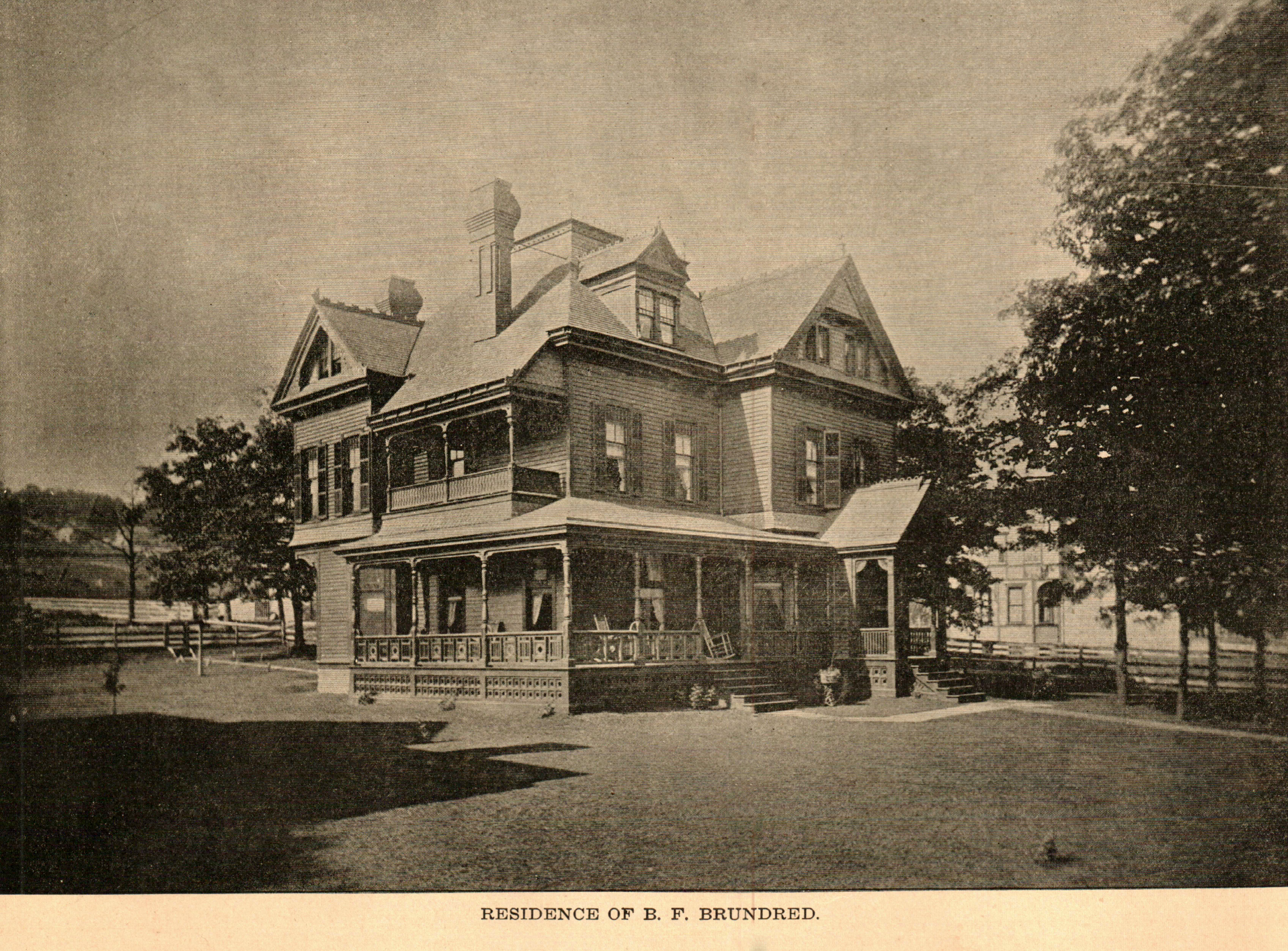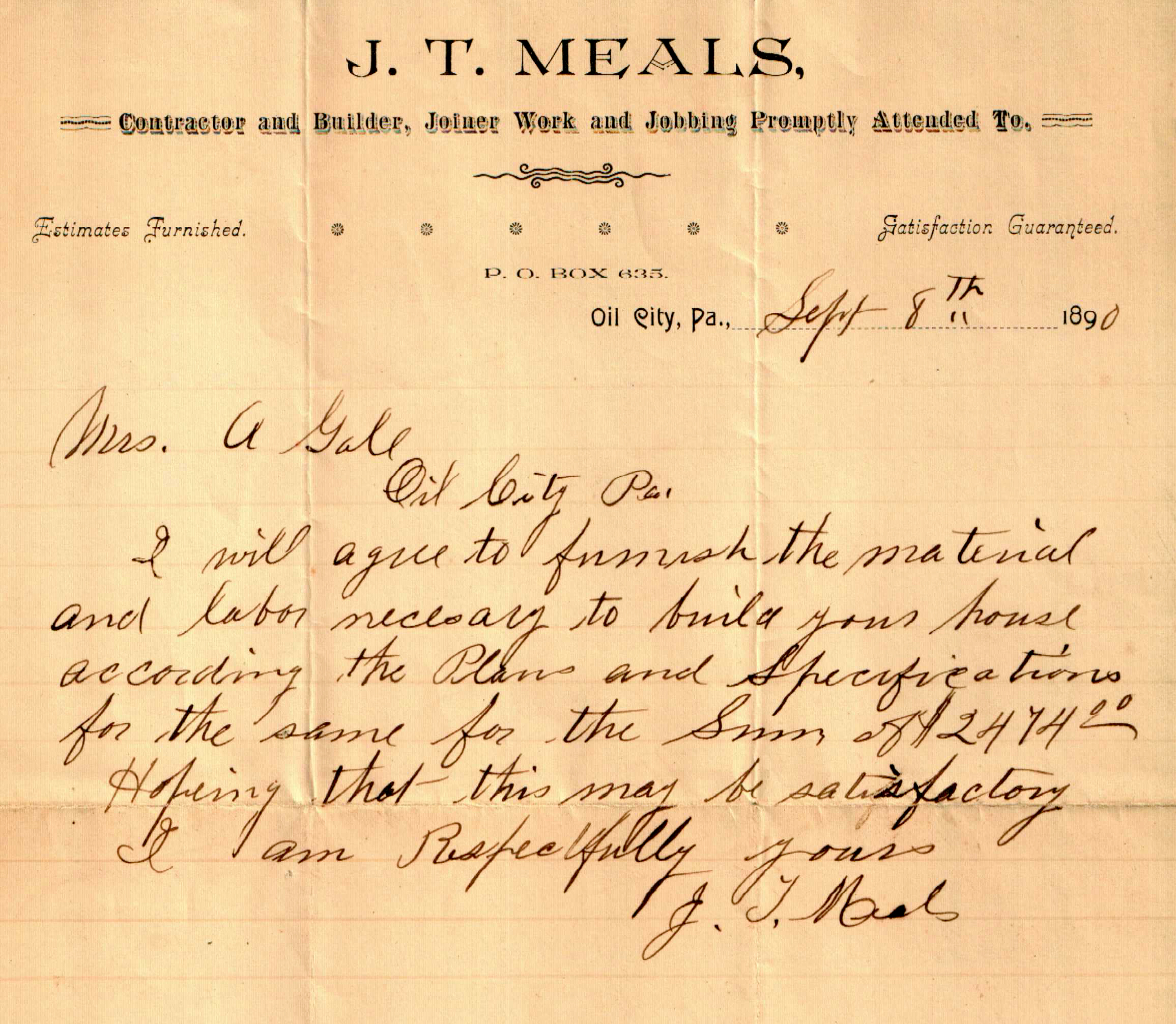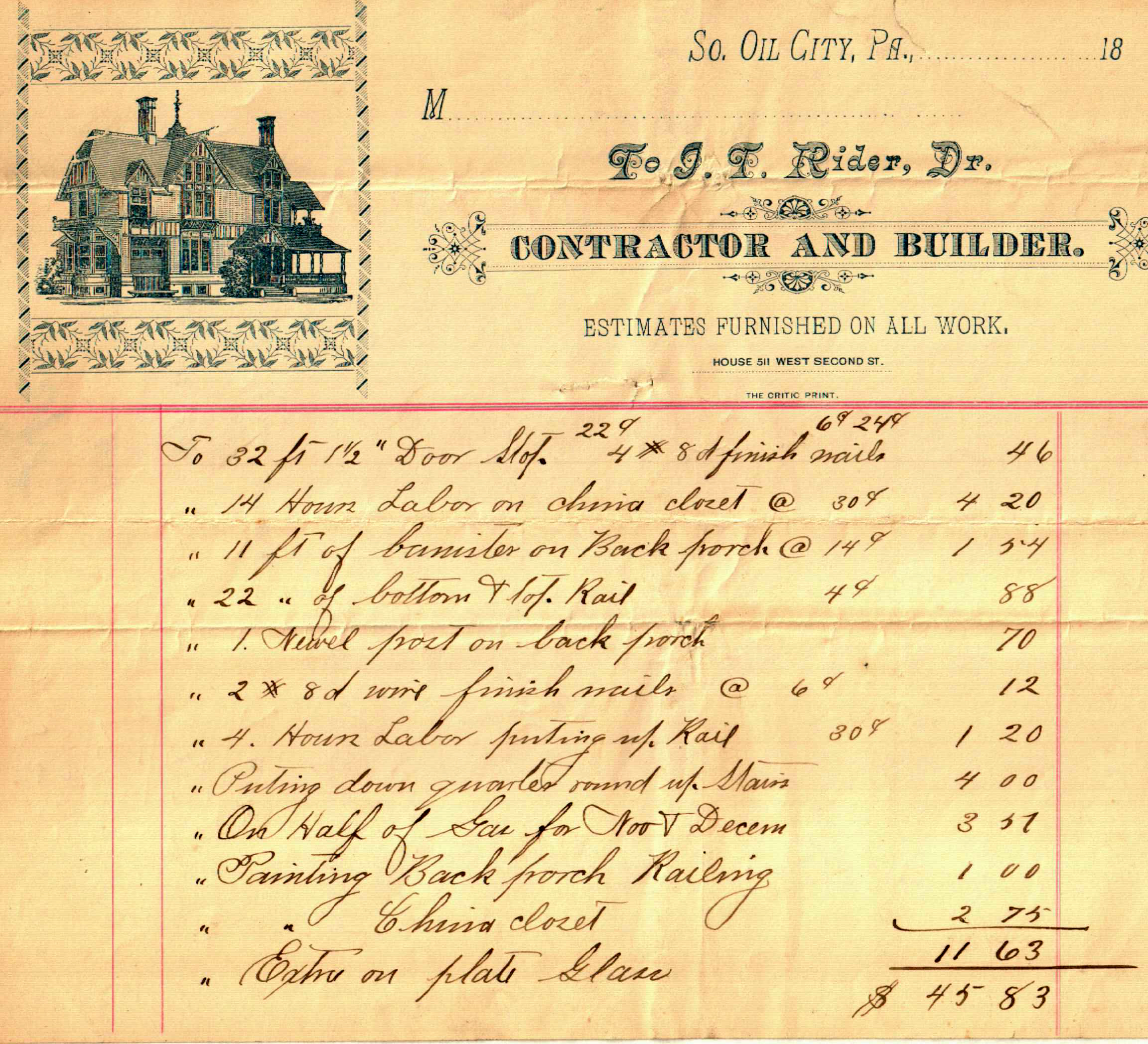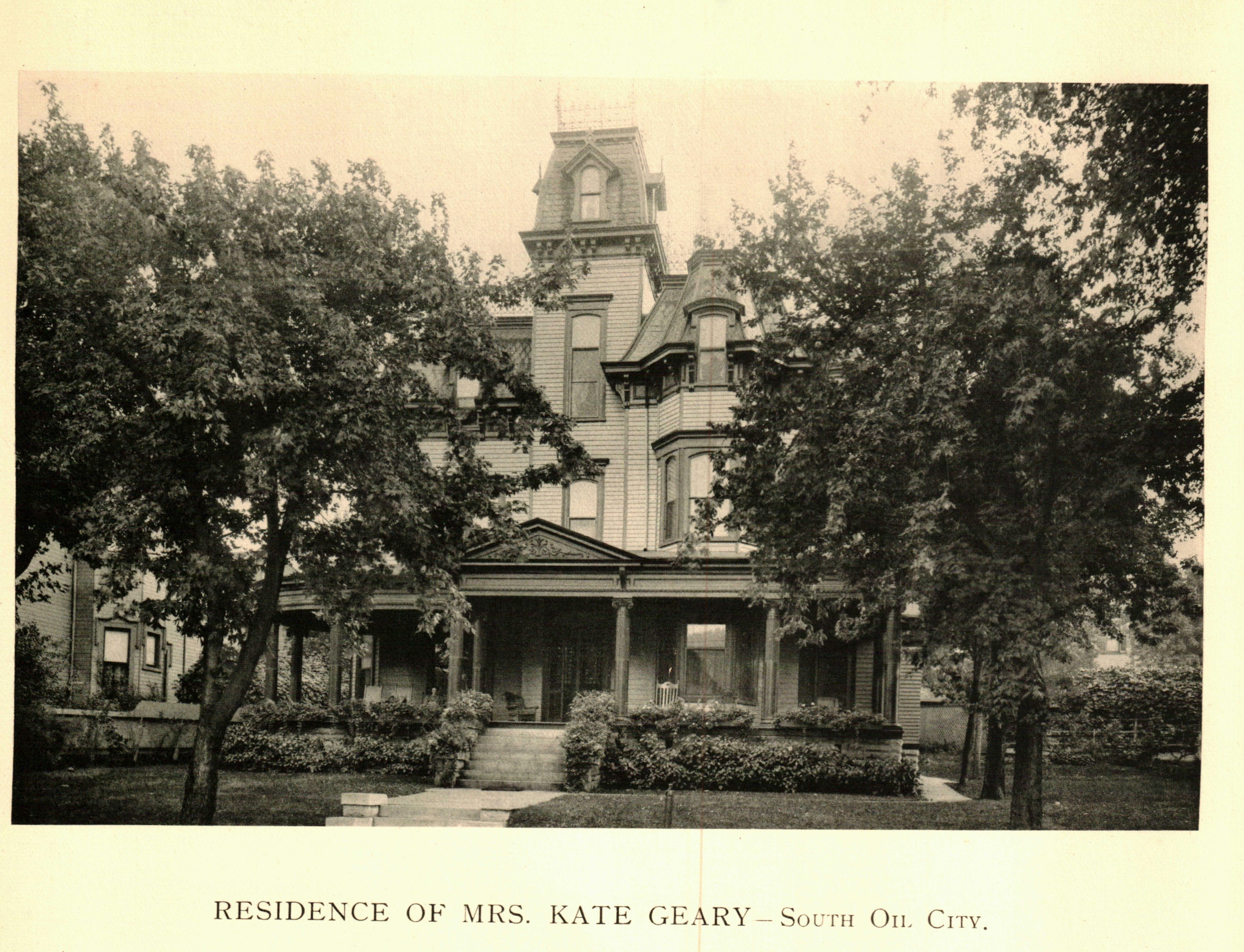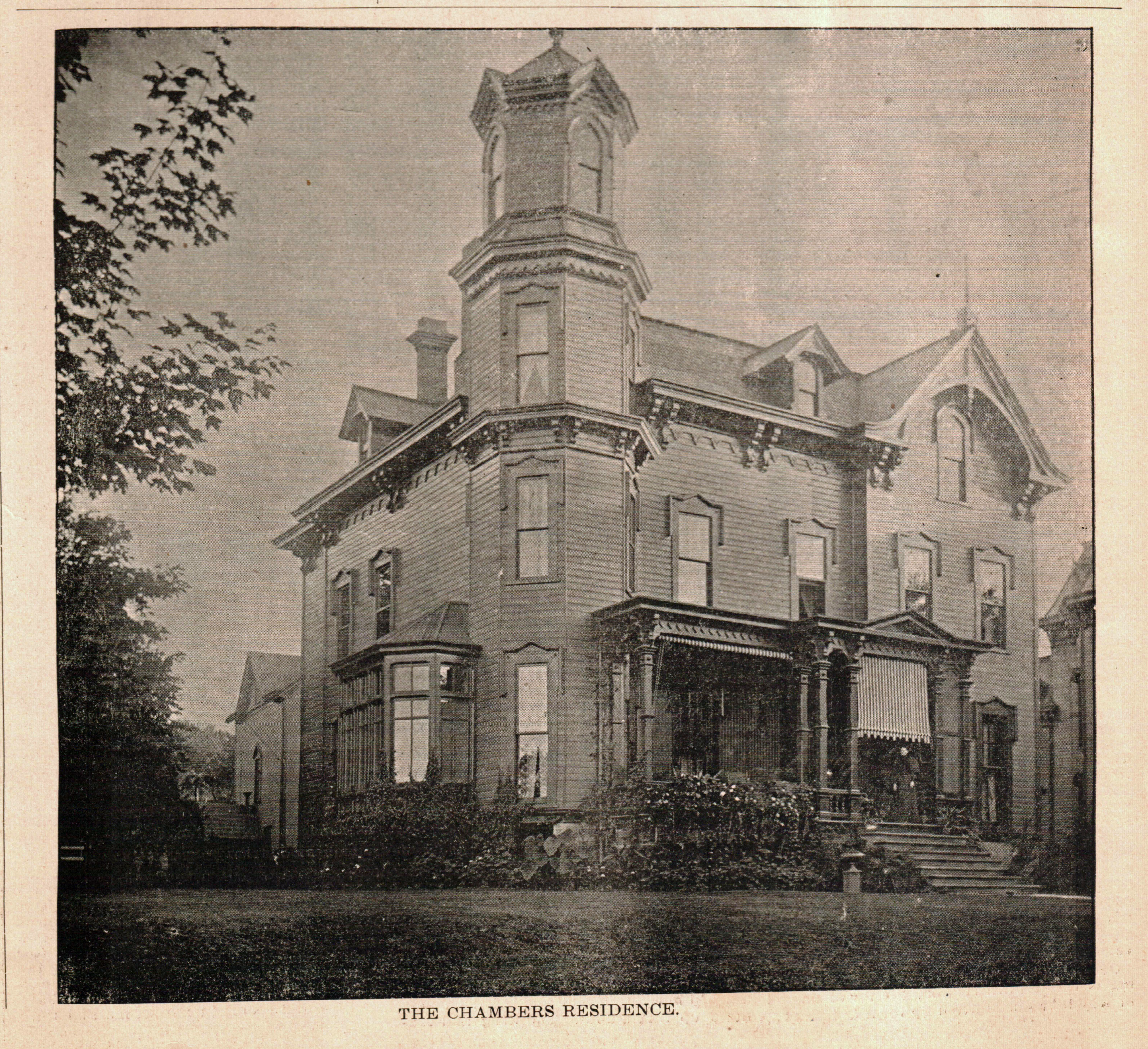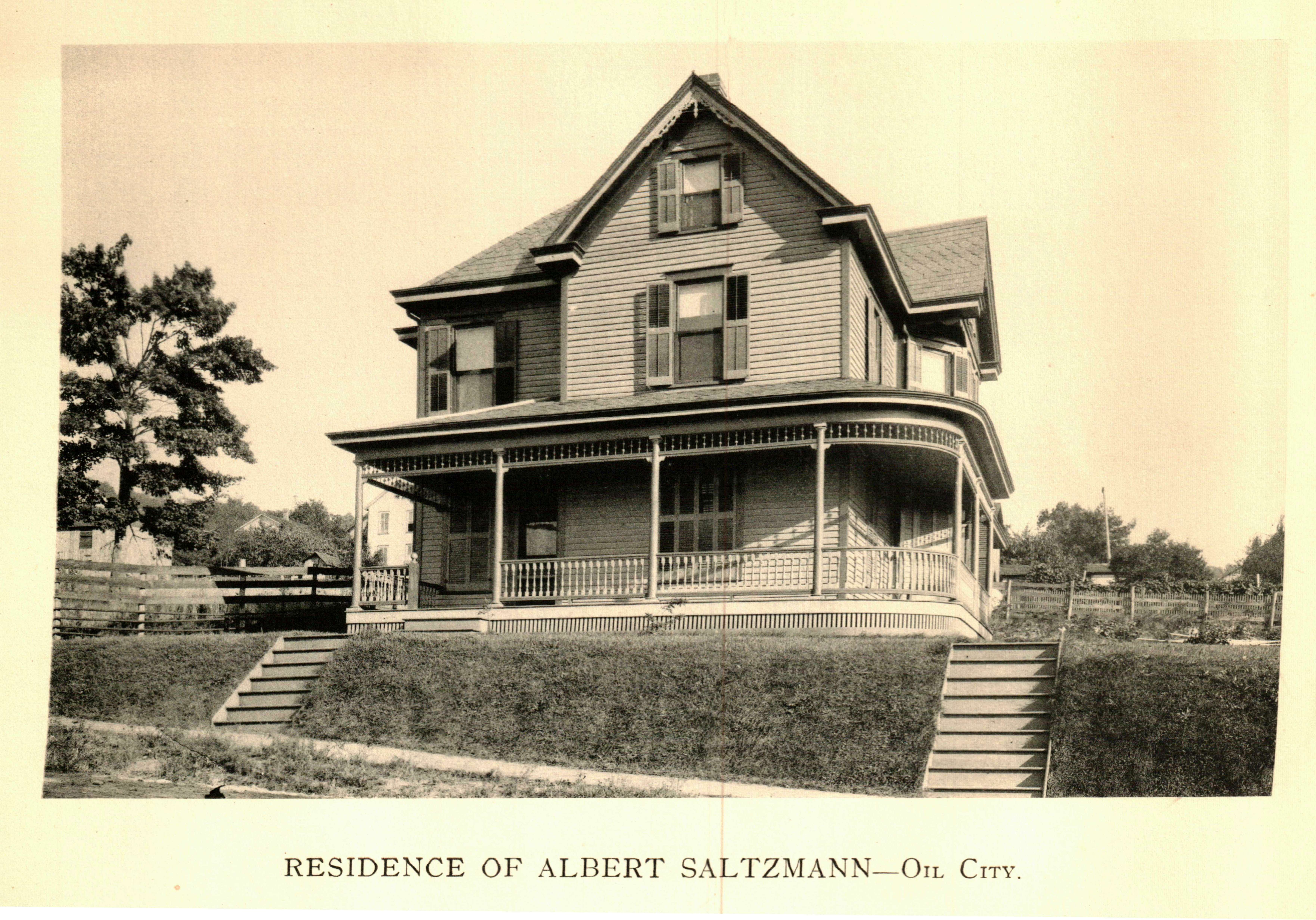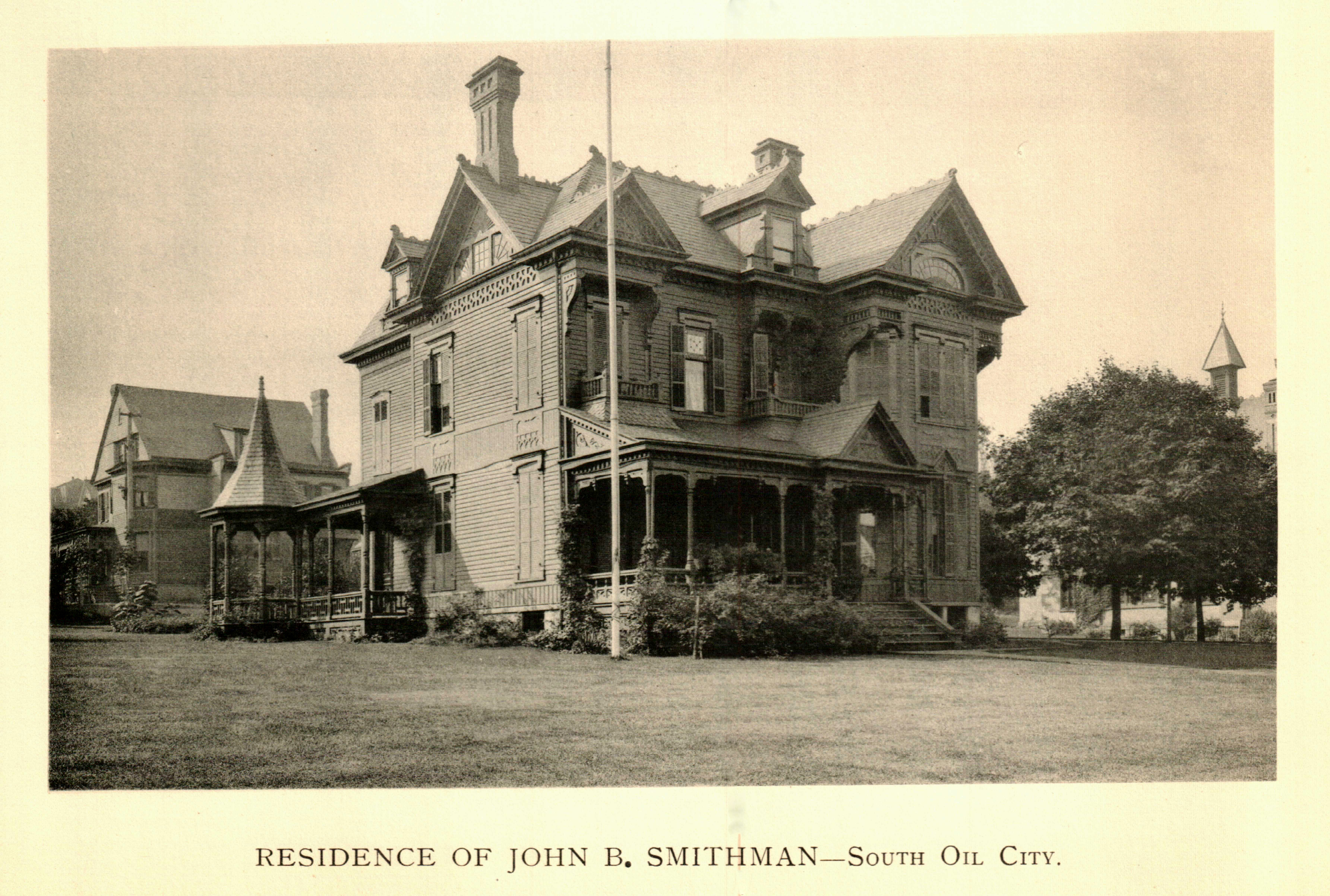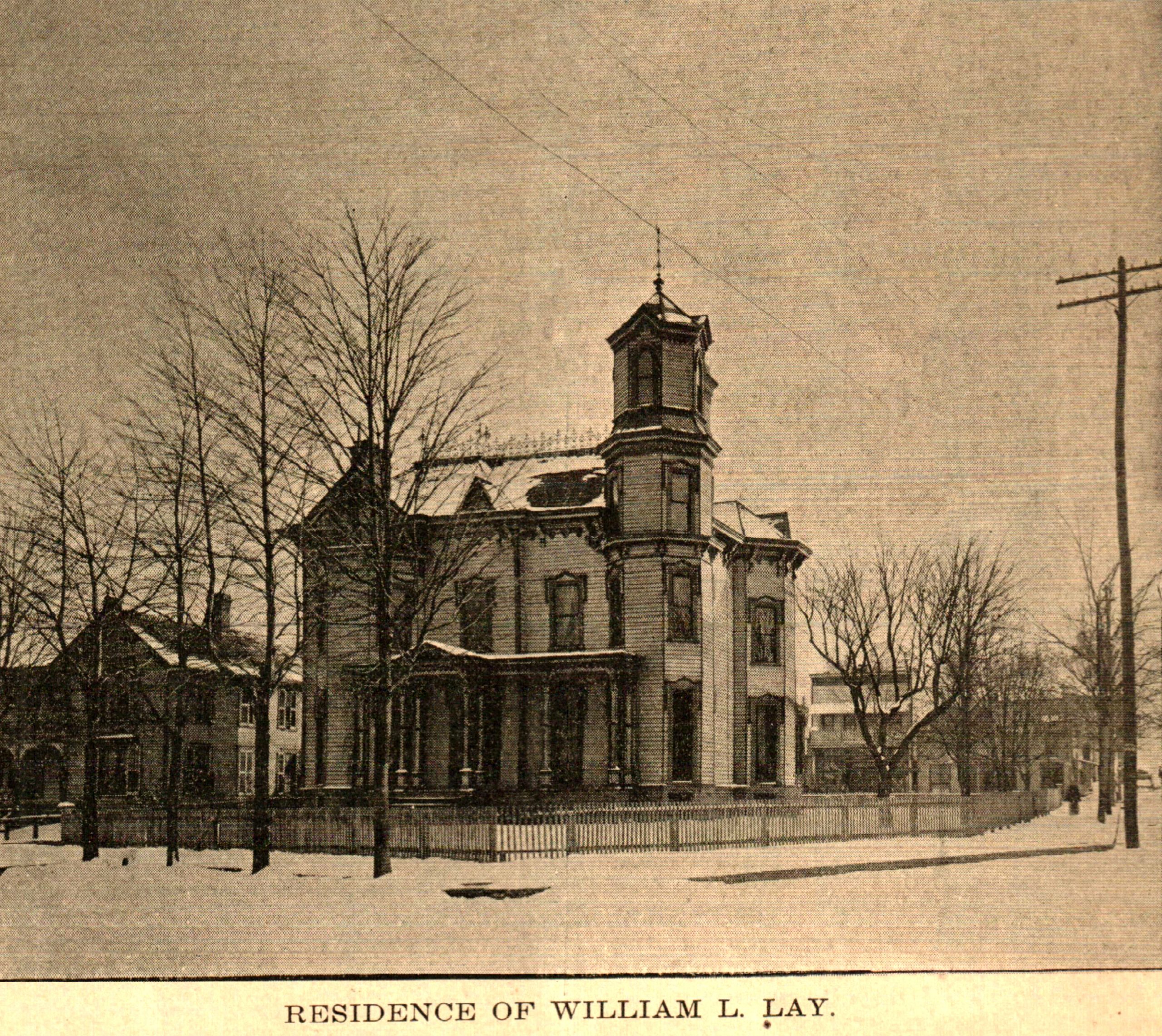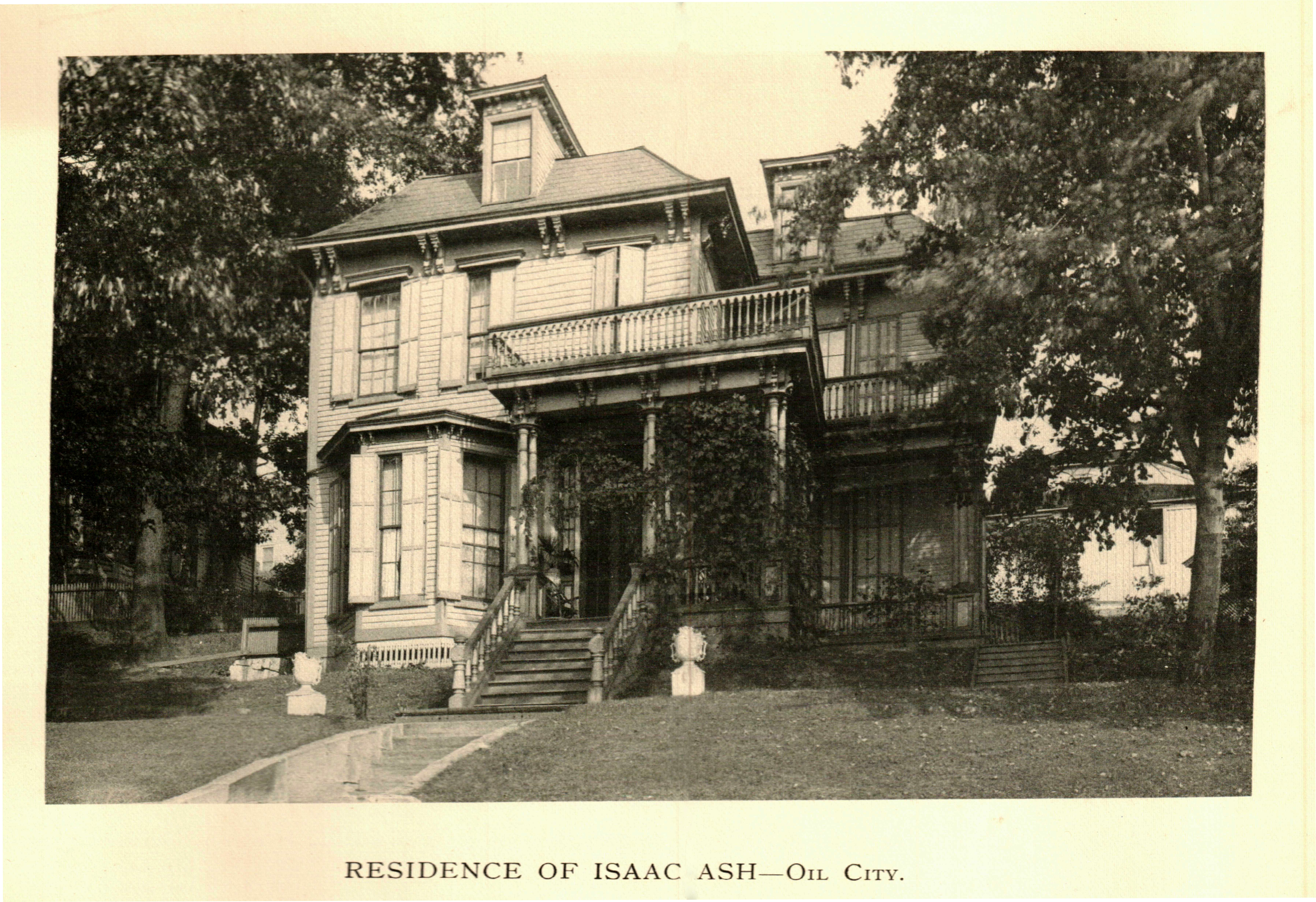Luxurious Residences
- Judy Etzel
- September 16, 2022
- Hidden Heritage
- 6778
For many years, Oil City was replete with hundreds of ornate residences scattered throughout the city’s numerous neighborhoods. Many of those imposing homes, built from the 1880s to the early 1900s, remain and have been modernized while still retaining their heritage. The architectural styles were varied with nearly all houses boasting large porches, full windows, two-story columns, gables, artistic filigree accents, towering chimneys and much more. The gracious and spacious homes were built by local industry leaders, political figures, transportation scions, retail shop owners and others enjoying good fortune because of the city’s success. The following photographs of the luxurious homes were provided by the Oil City Heritage Society, the Artwork of Venango County, PA booklet and the 1896 Souvenir of the Derrick.
THE TRAX RESIDENCE
David L. Trax, a blacksmith, came to settle in Oil City in 1861. He and his family lived in a sprawling house at 1147 West 1st Street with the entry highlighted by a winding brick road up over the hill. His experience as a blacksmith, including working for the grandsons of original Oil City founders Francis and Sarah Halyday, formed the foundation for his later work in the wagon industry. In 1876, he entered the business of manufacturing wagons and joined with William Kramer. Trax did the iron work and Kramer did the wood-related part of the business. They eventually made 5,000 wagons a year at their plant in the city’s West End. The company also made wheelbarrows and wagon jacks. In May 1946, the Trax residence, considered one of the largest in the county, was destroyed by a fire. The picture was taken in 1899 for a Trax family reunion.
THE BRUNDRED RESIDENCE
Benjamin Ford Brundred, a New Jersey native, came to Oil City in 1866 and worked as a clerk for two railroad companies. In 1877, he entered the oil business and joined with others to form the Union Refinery. He later worked for the Eclipse Lubricating Oil Co. until founding the Imperial refinery at Siverly. He was a founder of the Oil City Hospital and also served as president of the Oil City Electric Light Co. He and his wife, Lizzie Loomis, had seven children. She was considered “one of the few women who has developed business qualifications entitling her to rank in the category with the best species of the sterner sex,” according to the 1896 Souvenir of the Oil City Derrick. The Brundred house was located at 315 West 1st Street.
Oil City residents were kept abreast of construction projects, courtesy of frequent updates published in local newspapers in the late 1800s. Here’s a sampling from the Oil City Weekly Times in 1875:
- “Rev. Father Carroll will soon erect a new residence on Cottage Hill. Work has started at 35 Pearl Avenue and the cornerstone has been laid. … It is a valuable addition to the city and reflects unbounded credit upon the liberal people to whom its construction is due.”
- “The residences of David Criswell and Mr. Rich on the South Side are being repaired.”
- “The furniture is now being purchased for furnishing the Collins House and it is thought it will surely be opened about the first of August.”
- “Weaver is building an addition to his residence on Cottage Hill.”
- “Mr. Marcus Hulings intends to come to Oil City where he will erect a dwelling and make it his home. Being an energetic businessman, he will be a great addition to the city.”
- “Captain Bourne, formerly of Rouseville, is building a fine residence on Third Street, South Oil City.”
- “A couple of houses are being built on the Orange Estate. … Lumber is on the ground for others.”
- “Dr. Wolfe is finishing up a handsome residence on Third Street which when completed will add much to the appearance and attraction of this already pleasant street.”
The Oil City Derrick newspaper carried these items in April 1887:
- “The northern division of Oil City, not to be outdone by its southern sister, has caught the booming spirit and simultaneously goes to work with the hammer, saw, trowel and chisel in erecting dwelling houses, shops and stores to meet the great demand of the growing population.”
- “S.P. Steck is erecting a large two-and-a-half story building on North Seneca Street near the creek bridge.”
- “John Riley and Mrs. Morrissey are building houses on North Seneca Street opposite the boiler works.”
- “Mrs. Hassenfritz has moved into her new house on North Seneca Street and Nick Kerchner has a neat little house just about finished on North Seneca.”
- “George Benton has two houses finished on Stephen Street. William Curtis has built a house there, too. Jas. Fahey has shown his faith in the stability of Oil City by building a neat little house on Stephen Street. James Downey and Con. Brenn has done likewise.”
- “On Shamrock Street, Mike Condion has built a house and Mrs. Kat Manahan has her home there completed.”
- “Mr. Spring has the plasterers at work on a house on Chestnut.”
- “Contractor Wallace is building three houses on Plumer Road for Joseph Manning and commences one for Mr. Baumbaugh this week on the same street.”
THE GEARY RESIDENCE
Michael and Kate Geary lived at 207 West 1st Street. Michael, son of Irish immigrants and a Civil War veteran, worked in the iron industry in Erie, Titusville and Sharon before coming to Oil City in 1876. He started a small tank and boiler shop with two partners. It eventually expanded to include Oil City Boiler Works and Tube Mills which by the late 1800s employed nearly 2,000 people. Geary later bought the Collins House, refurbished it and renamed it the Arlington Hotel. Geary, according to published reports, was described as “one to whom the town … owes its importance as a manufacturing center.”
THE CHAMBERS RESIDENCE
Raised in Erie, Wesley Chambers headed out west to search for gold as a young man in 1852. In 1860, he came back East to Oil City where he joined the oil transportation business. He eventually organized the Union Refining Company and later the Bradford Oil Company. Chambers, who was described in news accounts as a staunch prohibitionist, was considered “one of the most prominent, influential and public spirited citizens in Oil City,” according to published accounts. The family home was located at the corner of West First and Reed Streets.
WHAT OIL CITY NEEDS: 1927
The City of Oil City was booming in 1927 and the evidence was everywhere: large and ornate residences, expansive factories, a growing population and more. The Derrick newspaper used to regularly publish an annual listing of “What Oil City Needs” and the 1927 article was short and sweet:
- More industries
- Marking historical spots near the city
- An adequate sewage disposal plant
- A new passenger depot
- Abatement of smoke nuisance
- Large and modern hospital
- Paving Plumer Road
- Building Allegheny Highway to the city
Oil City was a leader in the oil, glass and steel industries in 1927 and the success of those ventures showed in the elegant and elaborate homes built by the local industry leaders. The imposing residences dotted neighborhoods throughout the city.
The city also had a thriving commercial trade. There were four banks with nearly $24 million in assets, 7 refineries in or just outside the city, 42 major manufacturing plants that produced everything from barrels to glass bottles, drilling rigs, tubing, boilers and more. Oil City boasted more than 15 gas stations, 35 miles of street car tracks, 20 new car and truck dealerships, 11 clothing stores, 6 bakeries, 9 pharmacies, 6 hotels, 94 retail grocers, 4 photography studios, 20 restaurants, 6 dairies and more. The population numbered 23,000+ residents who supported 3 secondary schools, 11 elementary schools and a parochial high school.
THE SALTZMANN RESIDENCE
The Saltzmann family lived at 178 Plummer Street. Albert Saltzmann was the son of John and Helen Saltzmann who owned a brewery in the city. His father bought land on Palace Hill, drilled wells and then established a brewery on the site. An 1886 advertisement boasts that a Saltzmann Beer was “a pure, healthy beverage, a tonic and appetizer – Ladies will find it beneficial.” The original brewery was destroyed in an 1887 fire and the owners rebuilt on Union Street. Albert, who with his brother John J. Jr., took over the business in 1892 when the elder Saltzmann died.
THE SMITHMAN RESIDENCE
John Bernard Smithman and his family lived at 113 West 1st Street. He came to Oil City in 1863 and taught school for a few years in Cranberry. He soon joined the oil and gas industry as a producer and dealer and made a fortune. He was chairman of the committee to establish the Oil Exchange and helped organize Columbia Gas Company. Smithman is credited with inventing the flexible coupling used for gas pipelines. In 1890, he incorporated the Oil City Streetcar Company and founded Smithman Park, later known as Monarch Park.
THE LAY RESIDENCE
William L. Lay, a native of Erie, worked for a while as a druggist in Philadelphia until moving to Oil City where in 1862 he bought 87 acres of land along the Allegheny River across from Oil Creek. He laid out the town of Laytonia and moved his family to the city. Lay was engaged in the production, refining and transportation of petroleum throughout the oil valley. He was an organizer and first president of the Oil City and Petroleum Bridge Co. that owned the span just outside his home at the corner of Front and State Streets. His home later became the manse for the St. Stephen Church next door.
THE ASH RESIDENCE
Isaac Ash and his family lived at 25 Grove Ave. Born in Butler, he studied law and was admitted to the Venango County bar in 1864. He was Oil City’s first solicitor and served 12 years in that post. He was in partnership with several attorneys over the years, including a stint with the Ash, Speer and McSweeney law firm, and was the first president of the Oil City Lawyers Club. Ash was a charter member of the Ivy Club and the Venango Club. An ardent Republican, the lawyer was a strong supporter of numerous state and county GOP campaigns. Folklore says his grandfather, Joseph Ash and his siblings and mother, were captured by Indians when living in Kentucky. Some family members were killed but Joseph and a brother were held captive. They were set free but only after their ears were split to identify them as having been prisoners.
Written by Judy Etzel with research by Kay Dawson and design by Natalie Cubbon.
HIDDEN HERITAGE IS SPONSORED BY:
Oil Region Alliance
Gates & Burns Realty
Support This Project
Donations to the library are appreciated to help offset printing costs & make this project possible! Want to become a sponsor? Email us at promotions@oilregionlibraries.org to get started!
Make a Donation
